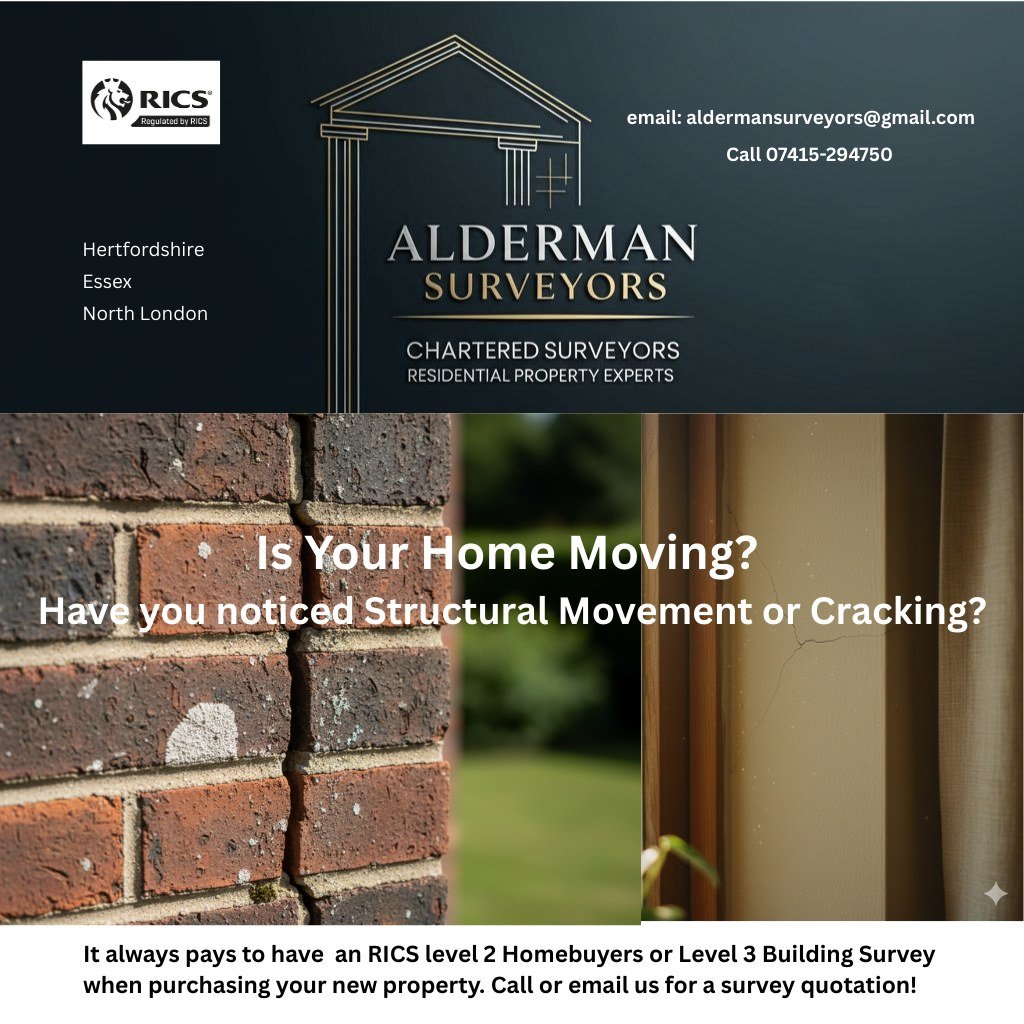
Why It Matters
Have you noticed new cracks in your walls or a door that suddenly doesn’t close properly? While some movement in a home is normal, significant or sudden changes may point to structural movement. This doesn’t always mean there’s a serious problem, but it’s important to understand the signs and act early.
What Is Structural Movement?
Structural movement refers to shifts, settlement, or distortion in a building’s foundations or framework. It can range from minor, cosmetic issues to more serious conditions that affect stability and safety.
Common Signs of Structural Movement
- Cracks in Walls
- Hairline cracks around windows or doors are often due to plaster shrinkage and usually harmless.
- Diagonal cracks, cracks wider than a coin, or those spreading through brickwork (inside and outside) may suggest something more serious.
- Sticking Doors and Windows
If doors or windows that once opened smoothly begin to jam, stick, or leave gaps, it could be a sign of frame warping caused by movement. - Uneven Floors
Noticeable slopes or dips in flooring can point to settlement beneath your home. - Gaps Around Skirting Boards or Ceilings
New gaps appearing where walls meet skirting or ceilings often indicate movement. - Rippling Wallpaper
Wallpaper creasing or rippling without water damage could signal movement within the wall itself.
What Causes Structural Movement?
- Subsidence – When the ground beneath the house sinks, often due to clay soil shrinkage during long dry spells.
- Trees – Large trees near foundations can draw significant moisture from soil, affecting stability.
- Leaking Drains or Pipes – These can wash away soil particles, leaving voids beneath foundations.
- Old Mine Workings – Properties near disused mines may experience ground collapse.
- Heave – The opposite of subsidence, where ground swells and pushes foundations upwards, often after trees are removed from clay soils.
- Settlement – Minor movement in new buildings as they adjust is normal, but excessive or uneven settlement can be problematic.
- Poor Construction – Inadequate foundations or poor building techniques may cause long-term movement.
What To Do If You Suspect Structural Movement
- Don’t Ignore It
While not every crack is serious, investigating early is crucial. - Monitor the Cracks
Take photos, measure, and mark cracks to track changes over time. - Consult a Professional
If cracks are more than cosmetic, contact a structural engineer. They can assess the type, cause, and severity of movement and recommend the right solution. - Check Your Insurance
Many home insurance policies cover subsidence, but it’s important to review your coverage and excess.
Final Thoughts
Early detection and professional advice are key when it comes to structural movement. Acting quickly can help you avoid costly repairs and protect your home’s value and safety.
👉 If you’re worried about cracks or movement in your property, contact us for expert advice and peace of mind.

